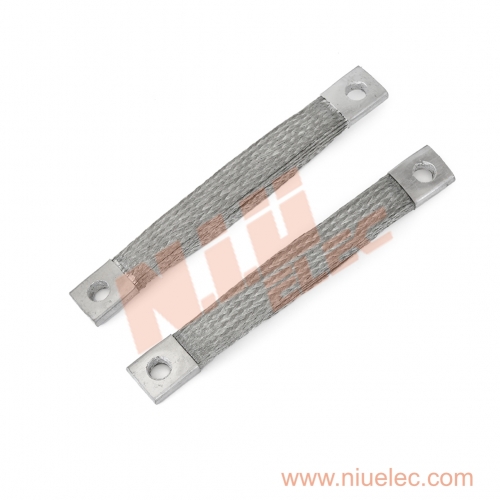Unleashing the Potential of Flexible Braided Cable in Power Systems
The landscape of power transmission is evolving, and flexible braided cable stands at the forefront of this transformation. As energy demands grow and infrastructure becomes more complex, the need for versatile and reliable electrical connections has never been greater. Flexible braided cable, particularly braided copper wire, offers a solution that combines conductivity, durability, and adaptability. This innovative approach to power transmission is revolutionizing how we design and implement electrical systems across various industries. From industrial facilities to renewable energy installations, braided cable is proving its worth in handling high currents while maintaining the flexibility needed for modern applications.
Table of contents:
Applications of Wire Braid Beyond Traditional Power Transmission
Comparing Rigid vs Flexible Cable Braids for Electrical Connections
How Braided Wire Improves Safety in High Current Environments
Innovative Designs in Flexible Braided Cable for Modern Infrastructure
Applications of Wire Braid Beyond Traditional Power Transmission
Braided cable has transcended its conventional role in power transmission, finding new applications in diverse fields. In the automotive industry, braided copper wire is increasingly used for grounding and battery connections, offering superior vibration resistance and current-carrying capacity. Renewable energy sectors, such as wind and solar power, rely on flexible braided cable to manage the dynamic loads and movements inherent in their systems. Data centers, with their high-density power requirements, utilize braided cable for efficient power distribution while minimizing electromagnetic interference. Even in aerospace applications, where weight and reliability are critical, braided copper wire provides an ideal solution for power and signal transmission. These expanded applications showcase the versatility of braided cable in meeting the evolving needs of modern technology and infrastructure.

Comparing Rigid vs Flexible Cable Braids for Electrical Connections
When it comes to electrical connections, the choice between rigid and flexible cable braids can significantly impact system performance and longevity. Rigid cable systems, while robust, often struggle with vibration, thermal expansion, and installation in tight spaces. In contrast, flexible braided cable, especially braided copper wire, offers numerous advantages. Its pliability allows for easy installation in confined areas and accommodates movement without stress on connection points. Flexible braids also excel in dissipating heat, crucial for high-current applications. They provide better resistance to fatigue from repeated flexing, a common issue in dynamic environments. While rigid systems may seem more secure, the adaptability of flexible braided cable often results in more reliable long-term connections, particularly in applications subject to movement or thermal cycling.
How Braided Wire Improves Safety in High Current Environments
Safety is paramount in high-current environments, and braided wire plays a crucial role in enhancing electrical system security. The unique construction of braided copper wire allows for superior current distribution across the conductor's cross-section, reducing hotspots and minimizing the risk of overheating. This even distribution also contributes to lower electromagnetic emissions, crucial in sensitive environments. The flexibility of braided cable enables better stress relief at connection points, reducing the likelihood of failure due to vibration or thermal expansion. In the event of a short circuit, the braided structure helps contain the arc, preventing widespread damage. Additionally, the increased surface area of braided cable improves heat dissipation, allowing for safer operation at higher currents compared to solid conductors. These safety features make braided cable an ideal choice for critical power systems in industrial and commercial settings.
Innovative Designs in Flexible Braided Cable for Modern Infrastructure
The evolution of flexible braided cable design continues to push the boundaries of what's possible in power transmission. Recent innovations focus on enhancing the already impressive properties of braided copper wire. New weaving techniques create denser braids, increasing current-carrying capacity without sacrificing flexibility. Some manufacturers are experimenting with composite materials, integrating high-strength fibers within the copper braid to improve tensile strength and reduce weight. Advancements in insulation technologies allow for thinner, more flexible coverings that maintain excellent dielectric properties and fire resistance. Smart braided cables are emerging, incorporating fiber optic strands or sensors within the braid structure for real-time monitoring of temperature and current flow. These innovations in braided cable design are paving the way for more efficient, reliable, and adaptable power systems in smart cities, renewable energy farms, and next-generation industrial facilities.
The versatility and reliability of flexible braided cable are reshaping the landscape of electrical power systems. From its expanded applications beyond traditional power transmission to its safety enhancements in high-current environments, braided cable, particularly braided copper wire, is proving indispensable in modern infrastructure. The comparison between rigid and flexible braids highlights the adaptability and efficiency of flexible solutions, while innovative designs continue to push the boundaries of what's possible. As we move towards more dynamic and complex electrical systems, the role of flexible braided cable in ensuring efficient, safe, and reliable power transmission becomes increasingly crucial. This technology is not just meeting current demands but is also paving the way for future advancements in power distribution and electrical connectivity.